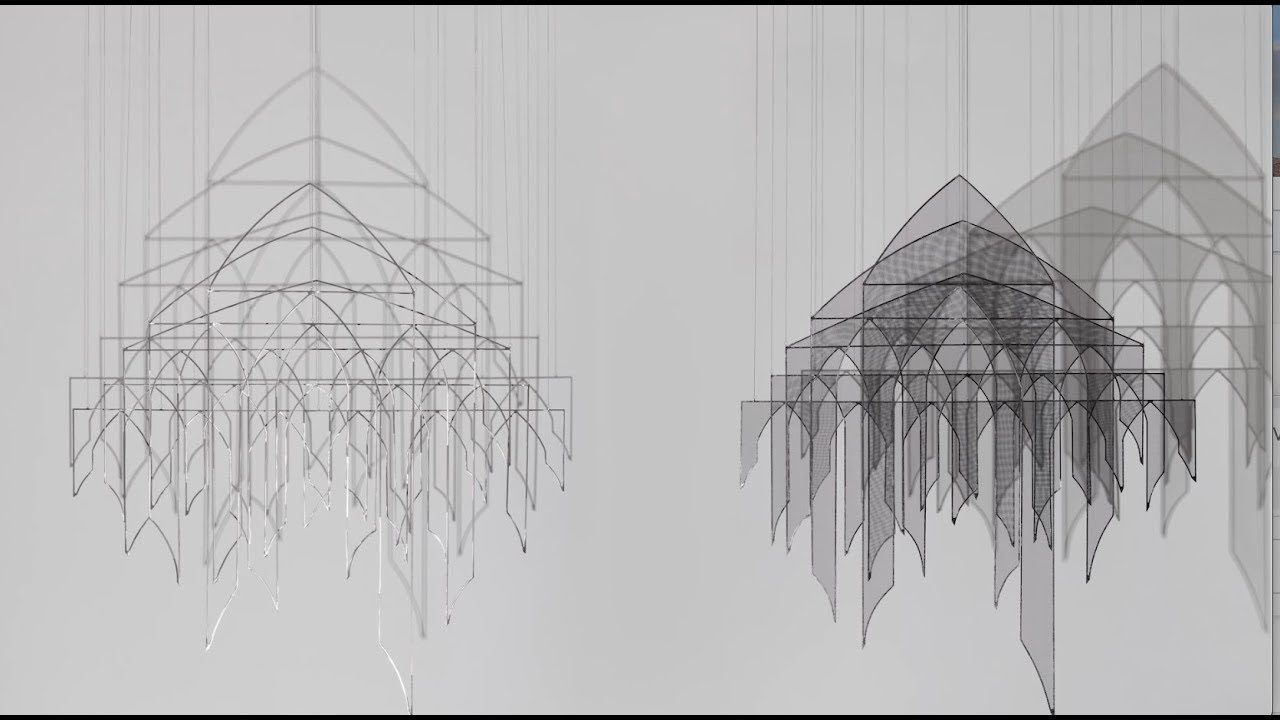Afruz Amighi on “My House, My Tomb”
More info: https://exhibitions.asianart.org/exhibitions/afruz-amighi-my-house-my-tomb/
Brooklyn-based artist Afruz Amighi finds inspiration in monumental religious buildings. “For me these structures are nearly all abodes,” Amighi says. “Whether . . . cathedrals or mosques, tombs or shrines, they are places of refuge, solace.” This installation references the white marble Taj Mahal in Agra, 印度, commissioned in 1632 by the Mughal emperor Shah Jahan as a tomb for his wife Mumtaz Mahal. The monument’s original plans included a black marble twin across the Yamuna River; though never built, it remains part of the site’s mythology.
Amighi has looked to forms in Islamic art and architecture to evoke a sense of wonder. An homage, Amighi’s sculpture is made with industrial materials and illuminated—the lighting reveals the glistening qualities of metal while casting shadows on the wall and ceiling. This effect plays with the relationships between sculpture and drawing, and between planar geometry and three-dimensional space, while evoking the idea of the Taj Mahal’s unbuilt black twin.
Artist Biography
Afruz Amighi (美國人, b. 伊朗, 1974) is an Iranian American sculptor and installation artist based in Brooklyn, 紐約. Her delicate abstract sculptures refer to a complex array of architectural sources: the meandering arabesques of Islamic mosques, the angular shapes of Gothic churches, the ornamentations of Manhattan Art Deco buildings and the urban landscape of Brooklyn, among others. Amighi uses architecture to investigate the way in which humans across cultures and ages build structures that reflect common ideals and aesthetic values, in spite of the complexity and precariousness of society.













